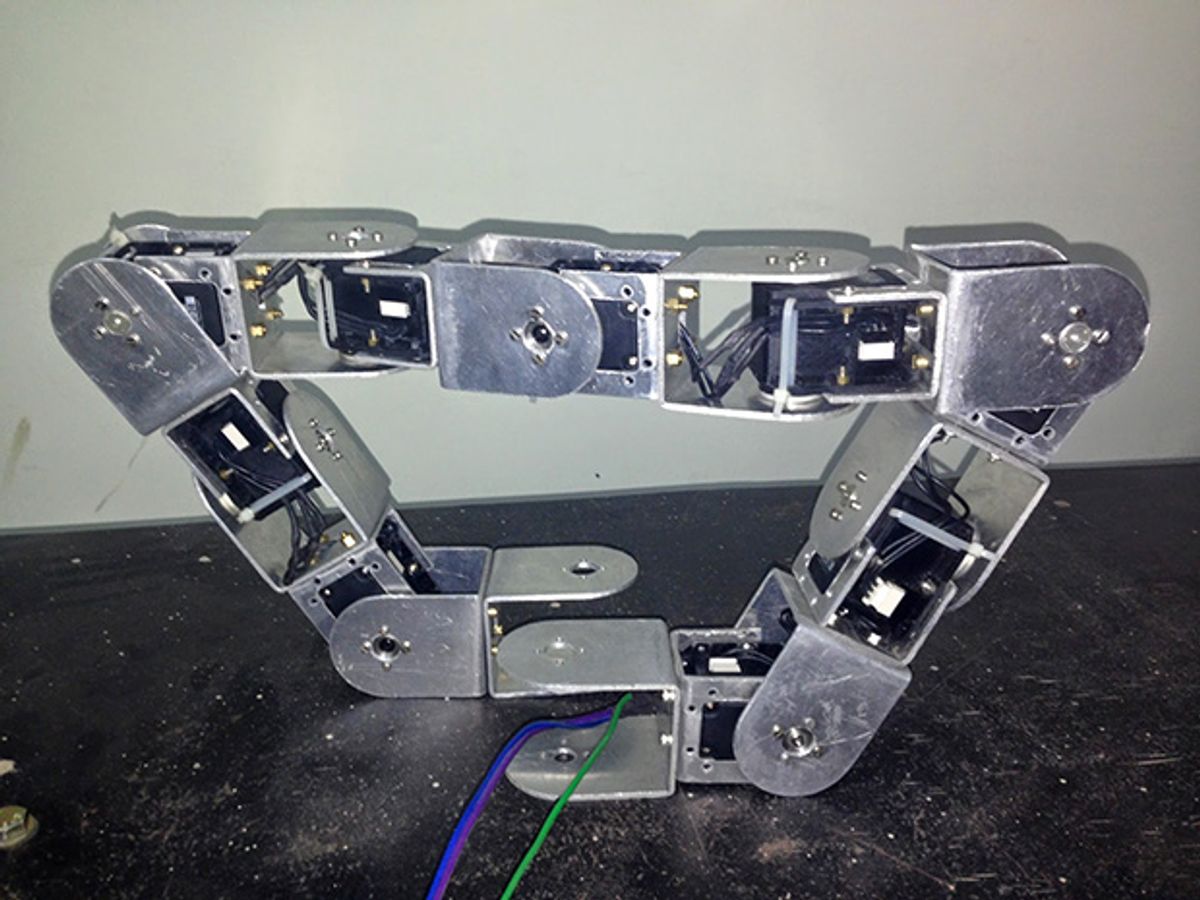One of the most compelling research areas in robotics is (I think, at least) bio-inspired robotics, which uses the evolutionary optimization of animals to suggest development paths for robots. Animals have had a long, long time to get their designs down, and creating robots that can take advantage of this (either directly or indirectly) provides a bit of a shortcut towards capabilities that are flexible, reliable, and high performance.
It's easy to look at an animal like a snake and be utterly blown away by all of the things that it can do. And lots of people are working very hard to build robots that are capable of doing all of the same things that a snake can do, at least in theory (or simulation). But, it's just as important not to see animals as the absolute pinnacle of what robots should aspire to, because robots are capable of taking advantage of their own designs in ways that biology either hasn't thought of, or physically can't.
We've seen this sort of thing before in a few snake robot behaviors; for example, snake robots can move laterally by rolling, which is a very efficient way of rapidly moving sideways as well as traversing obstacles or climbing cylinders. Real snakes, however, don't move like this at all, possibly because (and I'm speculating here) that they've evolved with very distinct upsides and downsides, which snake robots don't generally suffer from.
At IROS last month, we saw a particularly clever example of a snake robot with a unique form of locomotion. By using its head and tail as legs, this robot, called "ReBiS" (Reconfigurable Bipedal Snake Robot) can stand up and start walking around:
This is just a basic proof of concept experiment here, with very little optimization of the design of the robot or the gait. The researchers plan to try out robots with more modules and more gaits, to see what's the most efficient way to walk across rough and uneven terrain.
It's worth pointing out that modular snake robots can, in theory, reconfigure themselves into bipeds, but not only is that procedure much more complicated, but you also have to deal with a robot that spends lots of weight and complexity on being modular in the first place. ReBiS is somewhat less versatile, but it's far simpler, and cheaper as well.
"ReBiS – Reconfigurable Bipedal Snake Robot," by Rohan Thakker, Ajinkya Kamat, Sachin Bharambe, Shital Chiddarwar, and K. M. Bhurchandi, was presented at IROS 2014 in Chicago.
[ Inobotics ]
Evan Ackerman is a senior editor at IEEE Spectrum. Since 2007, he has written over 6,000 articles on robotics and technology. He has a degree in Martian geology and is excellent at playing bagpipes.



